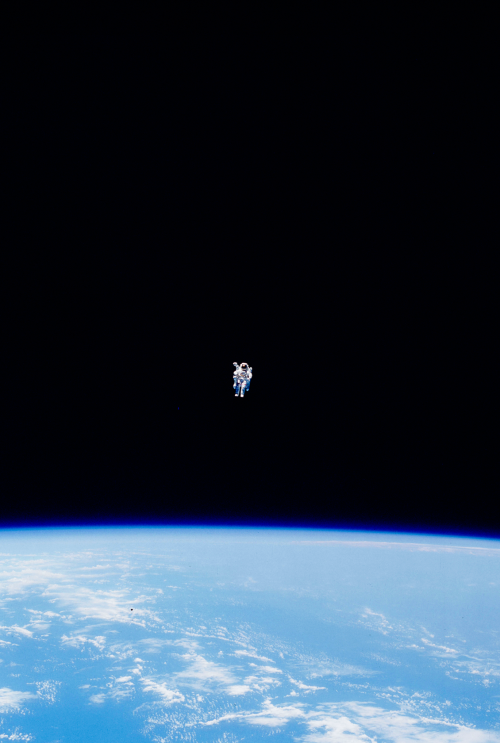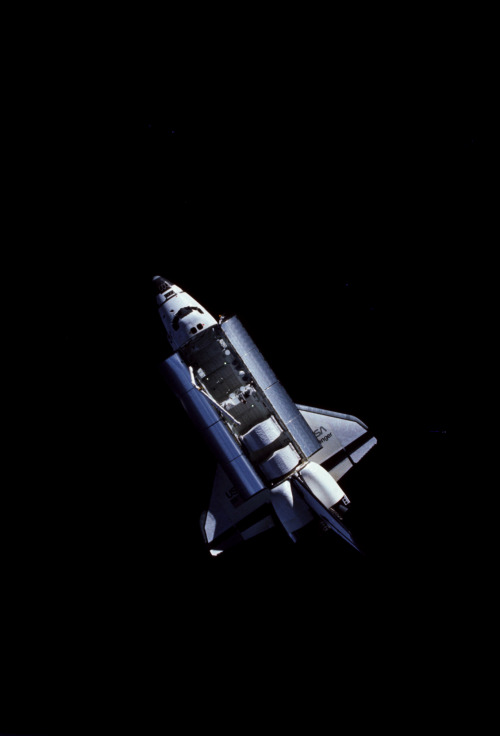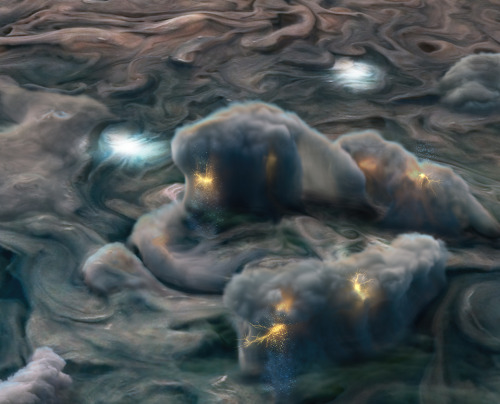1989: ‘Shuttle Evolution “Block II”’
1989: ‘Shuttle Evolution “Block II”’

(sorry for low resolution, I cannot find a higher-res version anywhere)
1989: A concept drawing for a never-realised next-generation Space Shuttle, capable of carrying 8 astronauts and possibly over 30 tonnes to low-Earth orbit. The most noteworthy feature is the detachable cockpit with engines which could serve as a launch escape-system or a lifeboat during an incident in-orbit. It was to use its lifting body, wings, and body flap to glide to a runway and presumably land on skids. The escape system would enable a crew's escape at any point during launch or orbital flight.
Comments and observations
The inclusion of this escape-system in the orbiter would necessitate a gap in the heatshield at the nose, one of the hottest parts of the vehicle during re-entry. That's obviously a big problem. Further, a pad-abort would seem to be very impractical. 3 seconds at 8 Gs would only send the capsule about 2 km high, probably not high enough to glide towards the nearest runway, especially with those stubby wings. Perhaps an emergency parachute system and a splashdown of the capsule would have been more sensible?
Other changes to the orbiter seem to be in the interest of improving gliding performance, such as two wing-tip vertical stabilisers instead of one tail-mounted one (to eliminate wing-tip vortices), shrinkage of the orbital manœuvring system pods by relocation of the OMS's propellant-tanks into the wings, and the addition of canards which would probably yield greater pitch-authority during landing.
The system also proposes replacement of the solid rocket boosters with liquid-hydrogen–fuelled boosters. These could provide a greater payload capacity, as well as greater control of thrust during ascent, and the possibility of an emergency engine shutdown, improving the crew's safety. The biggest and most obvious downside would be increased cost. The drawing doesn't specify whether the LFBs are intended to recover themselves by deploying parachutes, but what's certain is that saltwater generally damages delicate chemical rocket engines, so they probably couldn't just plop into the ocean like the real Shuttle's SRBs did.
More Posts from Cozy-airlessness and Others


The crescent Moon grows as Apollo 12 approaches, 17 November 1969.

Another picture of Saturn (3200x1800, CG)
Taken with Space Engine 0.990.37.1720



The view of and from Bruce McCandless while conducting the first untethered EVA and preliminary test-flight of the Manned Maneuvering Unit (MMU) on February 12, 1984. Bruce ventured approximately 320 feet from the orbiter.

“Stop The Militarisation Of Space” Soviet Union 1984

New results from our Juno mission suggest the planet is home to “shallow lightning.” An unexpected form of electrical discharge, shallow lightning comes from a unique ammonia-water solution.
It was previously thought that lightning on Jupiter was similar to Earth, forming only in thunderstorms where water exists in all its phases – ice, liquid, and gas. But flashes observed at altitudes too cold for pure liquid water to exist told a different story. This illustration uses data obtained by the mission to show what these high-altitude electrical storms look like.
Understanding the inner workings of Jupiter allows us to develop theories about atmospheres on other planets and exoplanets!
Illustration Credit: NASA/JPL-Caltech/SwRI/MSSS/Gerald Eichstädt/Heidi N. Becker/Koji Kuramura
Make sure to follow us on Tumblr for your regular dose of space: http://nasa.tumblr.com

still a wip





Remembering Col. Frank Frederick Borman II (March 14, 1928 – November 7, 2023), who passed away earlier this week at the incredible age of 95.
What an incredible life he had. Frank was the commander of Gemini VII and Apollo 8 and one of the first humans to fly around the moon. Until his death, he was the oldest living American astronaut—now his best friend Jim Lovell, who is 11 days younger, holds the distinction.

Frank’s beloved wife Susan, to whom he was married for over 70 years, passed away in 2021 and they are survived by their two sons.


Frank will be remembered as one of NASA’s best and brightest. He was known to be direct and to-the-point with a sharp sense of humor to match.
Every December 24th, I listen to Apollo 8’s Christmas Eve broadcast from lunar orbit in 1968, which included the crew’s recitation from Genesis and Frank’s message to the world: “Good night, good luck, a Merry Christmas —and God bless all of you, all of you on the good Earth.” I’ll do so again this year with a little sadness and a lot of gratitude to Frank and his extraordinary life.
"When you're finally up at the moon looking back on earth, all those differences and nationalistic traits are pretty well going to blend, and you're going to get a concept that maybe this really is one world and why the hell can't we learn to live together like decent people." Frank Borman (1928-2023)
If humans aren’t meant to travel to other planets then why does my skeleton feel too heavy to exist comfortably in Earth gravity???? Explain that sweaty

21 · female · diagnosed asperger'sThe vacuum of outer space feels so comfy :)
233 posts